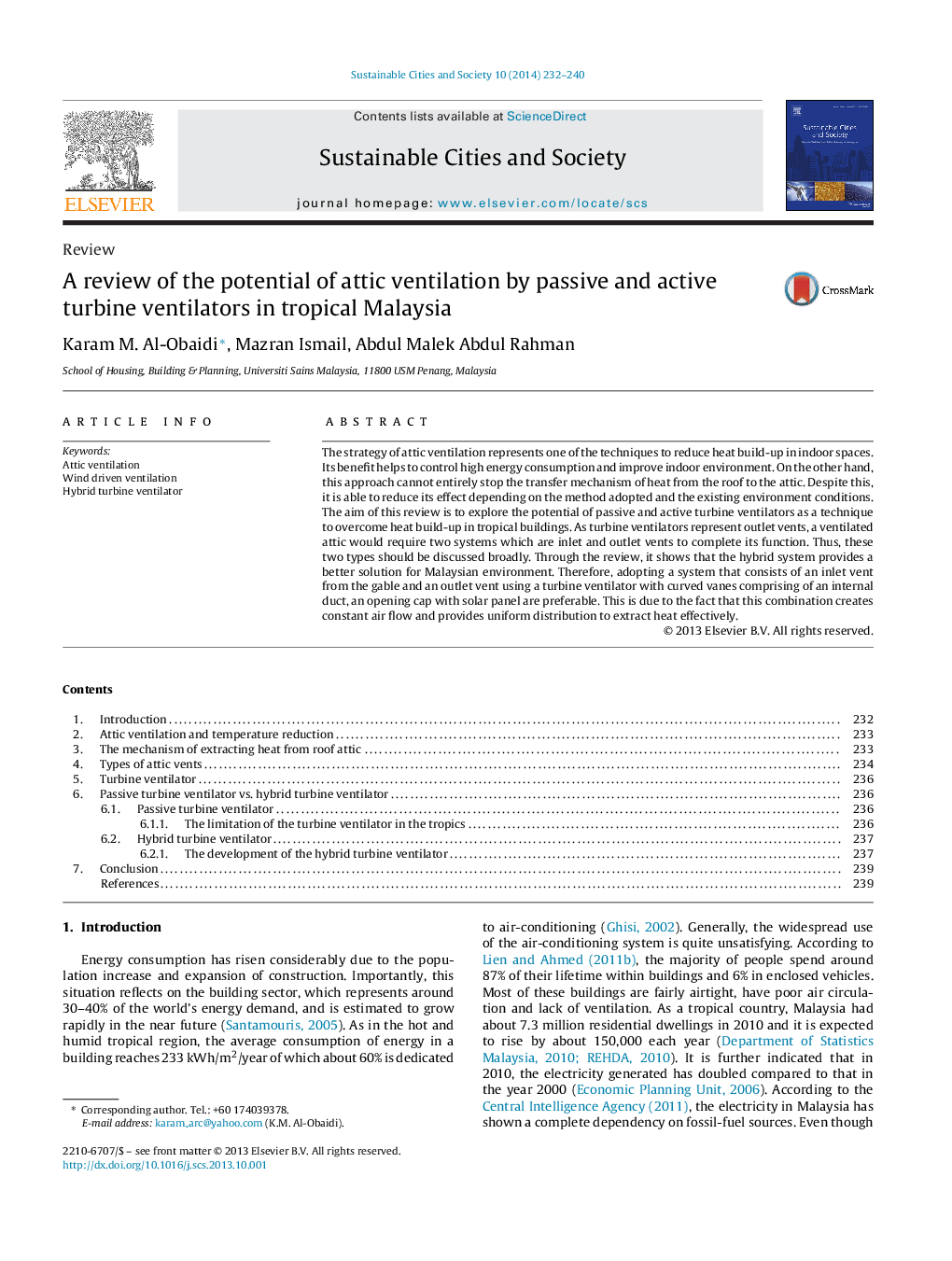| Article ID | Journal | Published Year | Pages | File Type |
|---|---|---|---|---|
| 6776843 | Sustainable Cities and Society | 2014 | 9 Pages |
Abstract
The strategy of attic ventilation represents one of the techniques to reduce heat build-up in indoor spaces. Its benefit helps to control high energy consumption and improve indoor environment. On the other hand, this approach cannot entirely stop the transfer mechanism of heat from the roof to the attic. Despite this, it is able to reduce its effect depending on the method adopted and the existing environment conditions. The aim of this review is to explore the potential of passive and active turbine ventilators as a technique to overcome heat build-up in tropical buildings. As turbine ventilators represent outlet vents, a ventilated attic would require two systems which are inlet and outlet vents to complete its function. Thus, these two types should be discussed broadly. Through the review, it shows that the hybrid system provides a better solution for Malaysian environment. Therefore, adopting a system that consists of an inlet vent from the gable and an outlet vent using a turbine ventilator with curved vanes comprising of an internal duct, an opening cap with solar panel are preferable. This is due to the fact that this combination creates constant air flow and provides uniform distribution to extract heat effectively.
Related Topics
Physical Sciences and Engineering
Energy
Renewable Energy, Sustainability and the Environment
Authors
Karam M. Al-Obaidi, Mazran Ismail, Abdul Malek Abdul Rahman,
